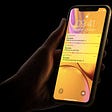(Fe)Males in Technology
There are over 4 billion people who currently rely on technology in some aspect of their life. Thinking back, people remember big names in technology like Thomas Edison, Charles Babbage, and Bill Gates. It’s easy to just think of these men due to their monumental achievements, however, part of their notoriety is due to their gender. It is easy to forget that women are constantly pushed aside and their accomplishments squashed and covered up. This is the case in the field of digital technology.
Women are the silent heroes of history. Yet, due to a lack of the “right” genitalia, their achievements were used with no thanks, leaving the women to be forgotten. They played so many key roles in history and if they were a man, they would have been memorialized and given a spot in the history books. Alas, the books children use in school are only filled with white men and thier achievements and downfalls. Perhaps, shedding some light on influential women in digital technology may bring them one step closer to equality.
History remembers Charles Babbage so clearly, yet, right beside him was the first computer programmer, who just happened to be a woman. Someone close to an incredibly famous man was almost lost to time. In the 1700s, Babbage was speaking of a new calculating engine that could act on what was foreseen by the engine. The only person intrigued by this concept was Ada Lovelace, who quickly became a friend of Babbage. Lovelace and Babbage wrote back and forth to each other about computer engines and later on, she came up with the concept for how the engine might calculate Bernoulli numbers. This is now considered the first computer program. Without Lovelace, computers may not be the same as they are today.
Women are consistently creating and changing the technological world for the better. If it wasn’t for Hedy Lamarr, the US Navy could have lost several battles. Hedy, with composer George Antheil, created the earliest forms of wi-fi and GPS. Hedy received a patent for a communication device that created private radio waves and frequencies in 1941. It achieved this by creating a code within the frequencies, constantly changing them, making it infrangible. This new code made the frequencies durable enough to withstand it from being intercepted, jammed, or decrypted.
Only a few years later, another woman created the base model for a digital technology that’s used in everyday life. Marie Van Brittan Brown, a nurse from Queens, New York, grew tired of the crime in her area and invented an at-home security system. With her husband who was an electrician, Brown created a movable camera, three peepholes, a microphone, unlock the door or sound an alarm. In addition to this, it all connected to a monitor where she controlled everything. It gave Brown the ability to interact with someone at the door without the danger of opening it, creating one of the first security systems for personal use. This model of home security is now the base structure of home security used today in modern home security systems. Brown and her husband received a patent for their model in 1969. This was monumental because not only was brown a woman, she was also African American, meaning thier social norm was a combination of discrimination and no credit.
People don’t realize how much we owe to women. If it wasn’t for the women above, we wouldn’t have some of the most basic things we rely on. Not to maintain the fact that young girls need to see how much women can accomplish. The majority of people have never heard of the women listed above, and that’s only a pinch of the number of women who have impacted the digital world tremendously.






